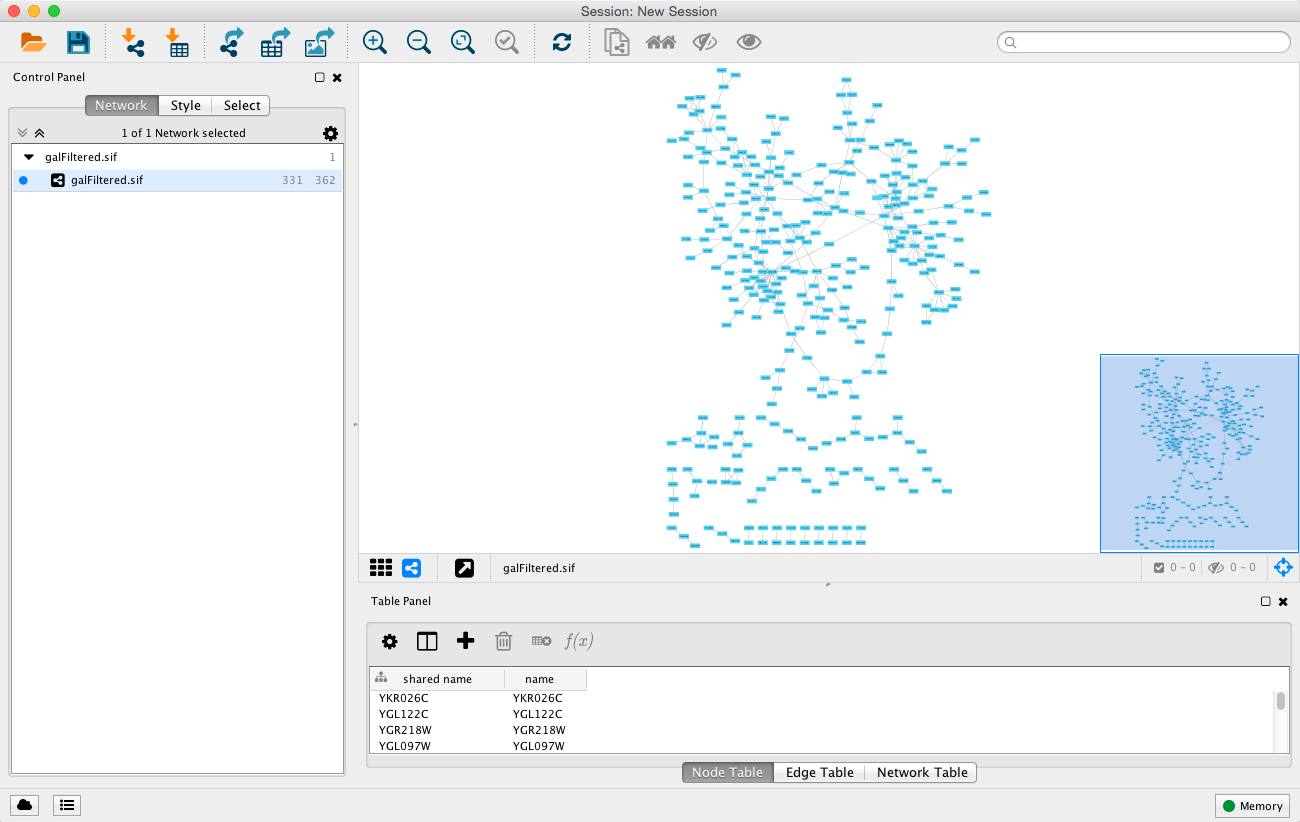

Click on "Show Node Degree Distribution" to see if the network can be considered a scale-free network (many nodes with low degrees and few hub nodes).The Analyzer panel will show up and new columns have been added to the Node Table containing the different node properties like Degree and Betweenness.Go to Tools → Analyze network and analyze the network as an undirected graph (do not select the checkbox in the dialog that pops up).The network should appear similar to the figure below. Click on the search icon (magnifying glass) to load the network. This will get only high quality results (80% confidence) and add no extra proteins to the network. Change the Confidence (score) cutoff to 0.8 and the Maximum additional interactors to 0. Next to the text field is a menu with a list of options.

(If you don’t see any STRING options, the stringApp hasn't been loaded.) Then click into the text field and paste the list of genes. Click on that icon and select STRING protein query. In the Network tab of the Control Panel at the top should be a text field with an icon at the left.


Select to import table data to a network collection.This will bring up the Import Columns From Table dialog. Open the file again, but now use File → Import → Table from File.This will create a grid of 1023 unconnected nodes, where each node represents a gene. You’ll see a warning about no edges, but that’s OK. Click only on the GeneName column header and set this column as the Source Node column (green circle).Click on Select None to disable all columns.This will bring up the Import Network From Table dialog. Import the file to create a network using File → Import → Network from File.
#Cytoscape 3 tutorial install#
Go to the app store (Apps > App Manager) and install the Functional Enrichment Collection.We will investigate the network topology and visualize the degree and the log2FC on the nodes in the network for interpretation. As input, we will use a lung cancer dataset from TCGA and we will focus on very strongly up- and down-regulated genes (abs. In this exercise, we will create a protein-protein interaction (PPI) network from the STRING database.


 0 kommentar(er)
0 kommentar(er)
